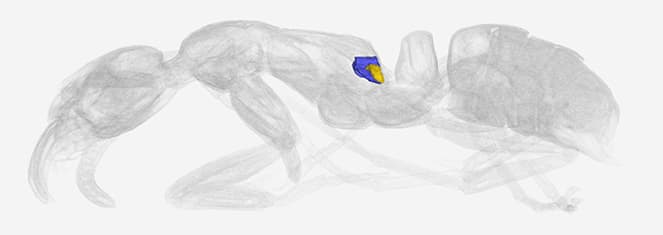It has been known for some time now that chemicals produced by certain ants have antibiotic properties. For the first time ever, however, one species of ant has recently been observed actually using those chemicals to treat infected battle wounds on others of its kind.
The species in question, the Matabele ant (Megaponera analis), is found in various regions of Africa south of the Sahara Desert.
It feeds exclusively on termites, meaning that groups of the ants periodically have to perform raids on nearby termite colonies. The soldier termites in those colonies definitely aren’t defenseless, though, as they inflict serious wounds on many of the invaders. If those wounds become infected, the injured ants may die.
An international team of researchers has now discovered that when such wounds do get infected, the hydrocarbon profile of the ant’s cuticle (its hard exoskeleton) changes in a manner that can be detected by other ants in its colony. Those ants respond by drawing an antibiotic secretion from one of their metapleural glands (located on the sides of their thorax), and applying it to the wound using their mandibles.

Fumika Azuma / Okinawa Institute of Science and Technology
In lab tests, it was found that application of the antibiotic liquid reduced the mortality rate of infected ants by approximately 90%.
Importantly, one type of bacteria commonly responsible for the infections – namely Pseudomonas aeruginosa – is also frequently the culprit in antibiotic-resistant infections in humans. The scientists are thus trying to identify all of the specific antibiotics produced by the ants, for possible use on people.
“With the exception of humans, I know of no other living creature that can carry out such sophisticated medical wound treatments,” said Dr. Erik Frank from Germany’s Julius-Maximilians-Universität Würzburg, who led the research along with Prof. Laurent Keller from Switzerland’s University of Lausanne.
A paper on the study was recently published in the journal Nature Communications.
Source: Julius-Maximilians-Universität Würzburg
Source of Article